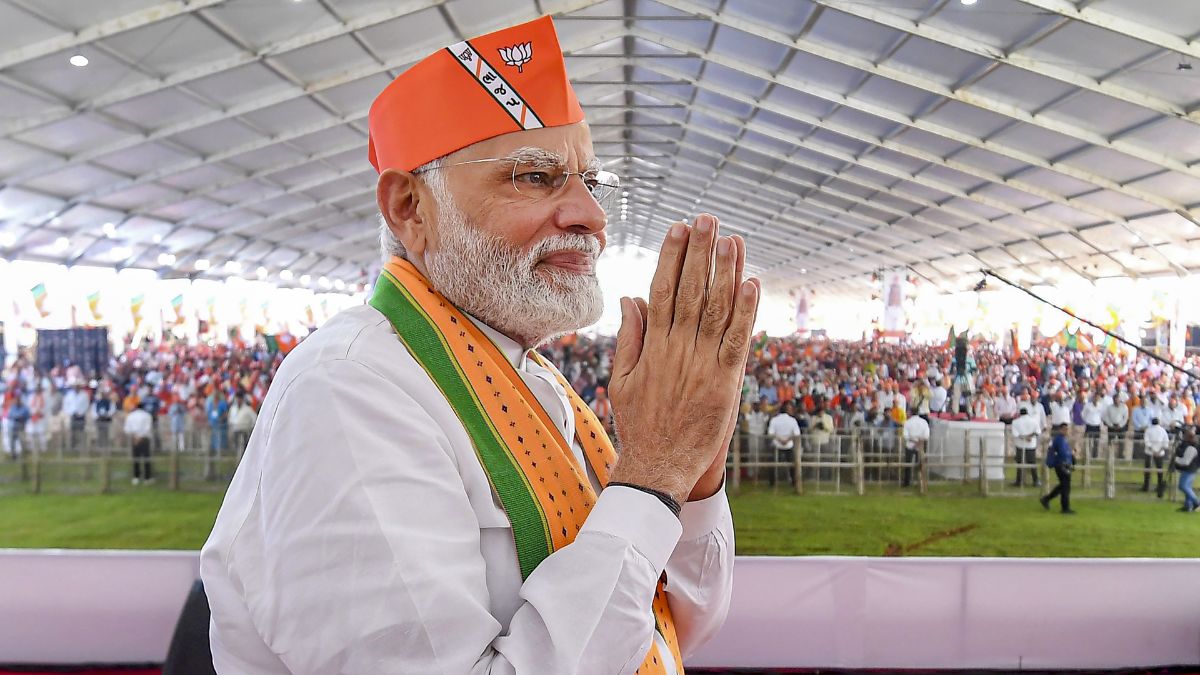It has been 10 years since the Bharatiya Janata Party (BJP) government under Prime Minister Narendra Modi came to power. Vying for a rare third term in power, the PM has often emphasised his government’s role in boosting the economy of the country.
We take a look at what the decade from 2014 to 2024 has been like for the Indian economy, with a focus on the performance of economic reforms, infrastructure development, and social welfare. Here, we explore the key milestones and impacts of Modi’s tenure on the Indian economy.
Impressive economic growth
GDP and per capita income: When Narendra Modi assumed office in 2014, India’s economy was grappling with sluggish growth and declining investor confidence due to a series of high-profile corruption cases, among other reasons. However, over the past decade, India’s gross domestic product (GDP) per capita has seen a remarkable increase.
In 2014, the GDP per capita was approximately $5,000; by 2022, it had risen to over $7,000, marking a 40 per cent increase, according to an essay in The Conversation. This growth trajectory is based on purchasing power parity. That means that the purchasing capacity of the Indian populace has grown.
Projected growth rates: According to the International Monetary Fund (IMF), India’s economy is projected to grow at a rate of 6.5 per cent in 2024, surpassing China’s projected growth of 4.6 per cent and far exceeding the United Kingdom’s expected growth of 0.6 per cent. This consistent outperformance underscores India’s robust economic policies and growth strategies.
Impact Shorts
More ShortsSocial welfare and public goods
Aadhaar and direct benefit transfer (DBT): One of the Modi government’s significant achievements has been the implementation of the Aadhaar system, a digital ID linked to fingerprints and iris scans. Nearly 99 per cent of Indian adults are now enrolled in this system, enabling DBTs and reducing leakage in subsidy delivery. This has ensured that benefits reach the intended recipients efficiently.
Infrastructure development: The government has launched extensive infrastructure projects, including a massive rural road construction programme. The push for infrastructural development has not only improved connectivity but also stimulated economic activity in rural areas.
A labourer works at a road construction site on the outskirts of Agartala, the capital of the northeastern state of Tripura. File photo/Reuters
Financial inclusion and digital transformation
Pradhan Mantri Jan Dhan Yojana (PMJDY): The PMJDY, launched in 2014, aimed to enhance financial inclusion by ensuring that every Indian has access to a bank account. As of January 2024, there are 51.50 crore PMJDY accounts, with deposits totaling Rs 215,803.17 crore. This initiative has played a crucial role in transforming savings behavior, encouraging people to shift from physical assets like gold to financial assets.
Growth in financial assets: The value of shares and debentures held by households surged by 1031 per cent from Rs 18,930 crore in 2014 to Rs 2,14,191 crore in 2023. Mutual funds’ assets under management increased by 378 per cent, from Rs 8,25,240 crore in 2014 to Rs 39,42,031 crore in 2023. Savings deposits also grew by 197 per cent, highlighting the growing financial literacy and investment appetite among Indians, according to Moneycontrol.
Macroeconomic Stability and Fiscal Management
Fiscal discipline: Prudent fiscal management has been a hallmark of the Modi government’s economic strategy. The fiscal deficit for 2024-25 is estimated at 5.1 per cent of GDP, with a target of 4.5 per cent by 2026. Major fiscal policy shifts, such as the introduction of the Goods and Services Tax (GST), have streamlined tax administration and increased revenue.
Foreign exchange reserves: India’s foreign exchange reserves have seen a substantial increase, rising from $304 billion in 2014 to $642 billion in February 2024. This increase has been driven by robust foreign direct investment inflows, strong exports, and prudent forex management by the Reserve Bank of India (RBI). The diversified reserve base provides stability and confidence to investors and policymakers.
A passenger watches videos of Indian prime minister Narendra Modi while traveling in the Thirukkural Express in April 2024. File photo/AP
Enhanced welfare programmes
The Modi government’s response to the COVID-19 pandemic was marked by a significant expansion in welfare programmes. The food subsidy bill increased nearly fivefold between 2019-2020 and 2021-2022, ensuring affordable access to food grains for the population. Essential goods such as toilets and cooking cylinders were supplied extensively, embodying what economist Arvind Subramanian termed “New Welfarism.”
Infrastructure and energy access
The proportion of Indian villages with access to electricity rose from 88 per cent in 2014 to 99.6 per cent in 2020. This rapid electrification has been pivotal in improving the quality of life and economic productivity in rural areas. Infrastructure investments have also enhanced connectivity, facilitating trade and commerce.
Boost to the stock market
India’s equity markets have witnessed significant growth, with the Bombay Stock Exchange (BSE) market capitalisation now above $4 trillion, making it the fifth largest in the world. This growth reflects increased investor confidence and overall economic dynamism.
In the 10 years since Modi came to power, the world has taken more notice of India than ever before. The economy is a bright spot, and this is something Indians are getting used to hearing. But the job is not done yet. The PM has promised to strengthen the Pradhan Mantri Kisan Samman Nidhi Yojana for farmers, increase employment opportunities in tourism, and expand the Ayushman Bharat Yojana to cover senior citizens with free and quality healthcare if he wins the ongoing 2024 elections. Above all, the BJP has promised to turn India into the world’s third-largest economic power.
With inputs from agencies


)

)
)
)
)
)
)
)
)



